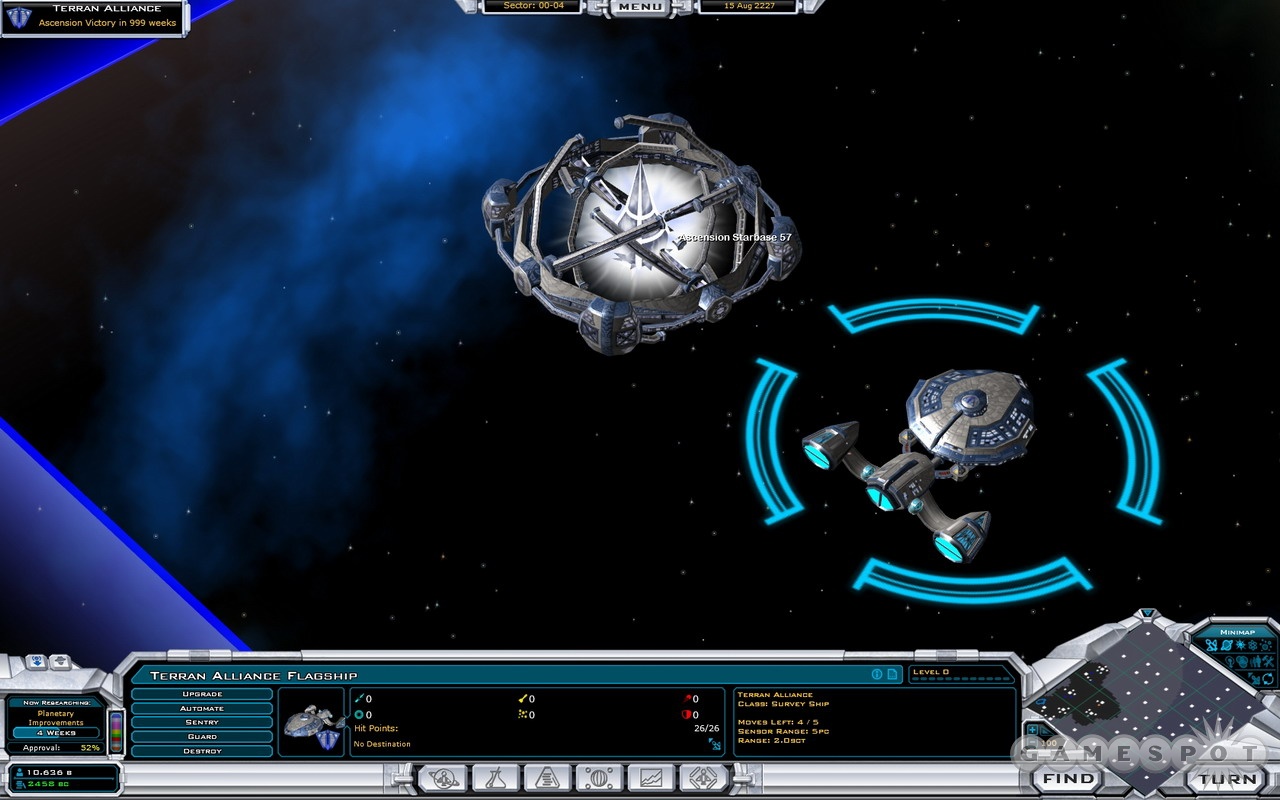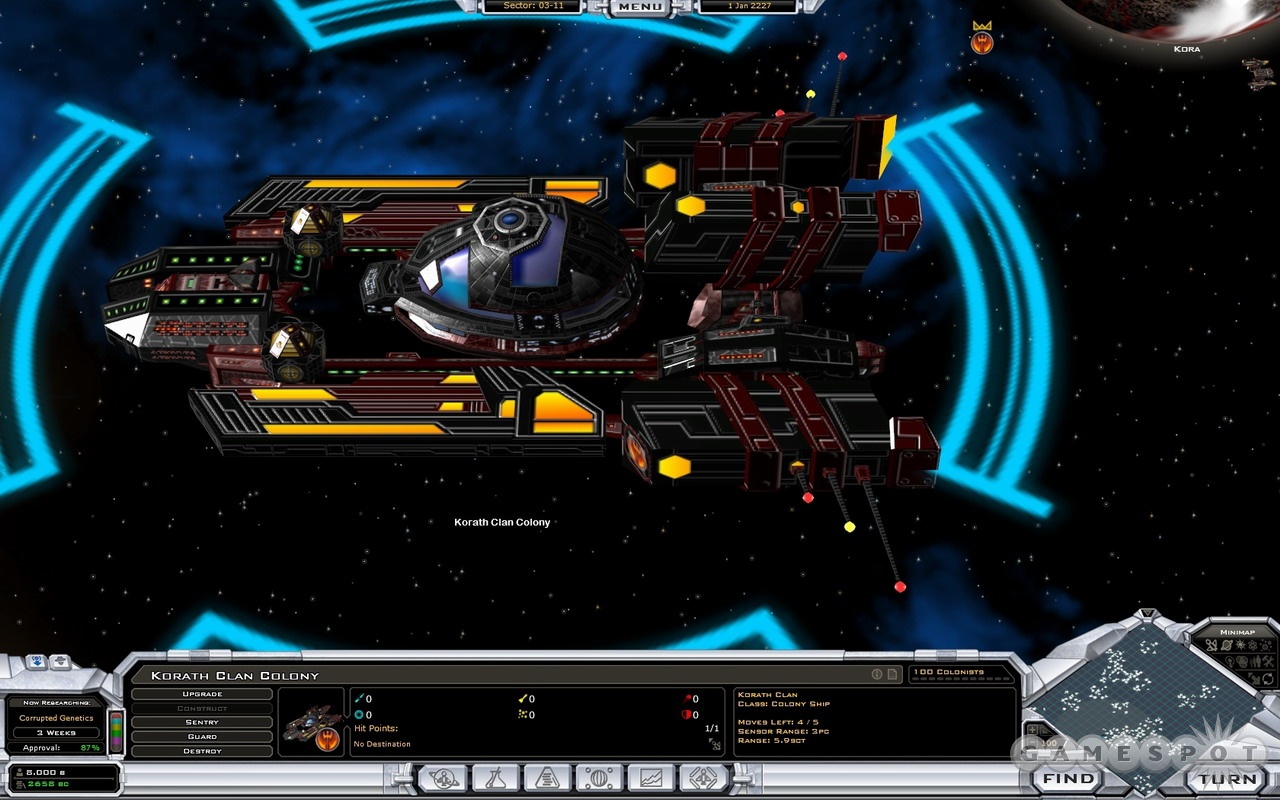Galactic Civilizations II: Twilight of the Arnor isn't just a great expansion, it's also a wonderful culmination of everything good about the series. Developer Stardock has addressed just about all of the possible complaints about both the original game and its Dark Avatar add-on. Plus, they've added impactful tech-tree innovations, a climactic campaign, and a host of other tweaks, for a superb example of what an expansion pack should be.
If you are a Gal Civ addict you'll be excited about the new tech trees provided for each of the game's 12 playable civilizations. Where the Terrans, Drengin, Yor, Thalans, and pals used to share a single tech tree that made all of the civs go about their galactic gallivanting in a similar style, each now has branching-off points that emphasize unique traits. This means that you're now able to play civilizations very differently, as well as make the good guys really good and the bad guys really bad. With the evil Drengin, for example, you're now free to indulge your inner De Sade by spending credits on such horrific goodies as Xeno slavery, slave canyons, and the always entertaining visions of agony philosophy. The murderous Drengin offshoot Korath clan is actually even nastier, with such techs as malicious bargaining, wretched cloning, and dark influence. Terrans, on the other hand, can be happier expansion-minded imperialists with such specialties as majesty, cultural domination, and stellar folding. Extra detail and history have been tossed into each tech as well, giving you insight into each civilization's identity and, in some cases, reinforcing their alien natures.

New visuals have been grafted onto the original game's star and planetary maps to give each civilization a distinct look. Each race now has differently styled ships and planetary buildings, lending further unique character to the civs, as well as boosting replay value. Planetary surfaces look different now depending on who's in charge. Drengin worlds come off like utter hellholes, complete with slave pits in place of factories and slaveling imagination labs in place of research facilities. Terran planets look a lot like Earth with standard factories, farms, and research facilities. Thalan worlds are bizarre and time-focused thanks to the temporal entertainment, as well as the incredibly powerful hyperion matrices. Ships have also been reworked with more polygons and texture detail, resulting in a much more varied range of vessels that appear more realistic. The cosmetic differences between the ships in last year's Dark Avatar and the ships in Twilight of the Arnor border on astounding, with most of the flat, featureless ship surfaces of the old game being replaced by the sort of detailed, industrial hardware that you would expect to find on a galaxy-spanning vessel. Yet even with these vast improvements, system requirements haven't been ramped up; the game runs just as fast and just as smoothly as before.
Other Twilight of the Arnor additions are low-key. The new campaign is an enjoyable wrap to the Dread Lords saga that tells the story of the Terrans finding the last survivor of the ancient Arnor. This ancient super-race put the Dread Lords in their place many thousands of years ago, which means that you're now relying on their tips to do so again, as well as free up the galaxy for unimpeded wars a-plenty between the Drengin and, well, everybody else. A new victory mode called Ascension has been introduced for sandbox play. Here, you can trigger the endgame by discovering five randomly placed crystal anomalies on the map and building star bases around them to retrieve their mystical goodness. If you hold them long enough to ascend to a higher plane of existence, you win the game. There are a couple of significant issues with this victory condition, however. First of all, Ascension crystals are often ignored by rival races, even if they're located right under their noses in key solar systems. So there rarely seems to be much competition for what is ostensibly the most important resource in the entire galaxy. Second, enemy empires don't seem to have an issue with you setting up star bases around crystals until you're about 150 weeks from victory, whereupon they suddenly notice what's going on and declare war on you, one after the other. This seems very artificial--like you're simply triggering a countdown instead of dealing with intelligent rivals. This lengthy delay also gives you lots of time to put together a massive fleet and create defenses powerful enough to fend off almost any sort of assault.

Military action has also been enhanced--at least in theory--with the addition of terror stars, which are rather familiar-looking planet busters that can blow up a world as quick as you can say "Alderaan." They're far too time-consuming and a little too easily destroyed to be a true galaxy-beater, though. Immense galaxies have been added to the list of map choices in sandbox games, providing the option of setting up epic matches that can last for weeks. This option is a bit treacherous for anyone accustomed to previous, saner, galaxy sizes because you have so much space to cover that you can easily overextend yourself early in the game and wind up in major financial difficulty. Editors now allow you to alter every aspect of the game. Numerous interface tweaks make it easier to track technologies, track finance, and even set up automatic ship building whenever new techs are revealed. About the only part of the original game design left untouched is multiplayer, which remains MIA and will probably continue to be absent until Galactic Civilizations III from the looks of things.
Adding this much new life to what should be a very familiar game is an amazing achievement. While no single addition here can be said to make this expansion, the scope of the subtle yet wide-ranging changes greatly improve the Galactic Civilizations II experience. Before Twilight of the Arnor, players could stick to the Terrans and encounter everything that the game had to offer. Now, you deal with something new each and every time you go galaxy conquering with a different alien race, which freshens up a game that was in need of exactly this kind of facelift.